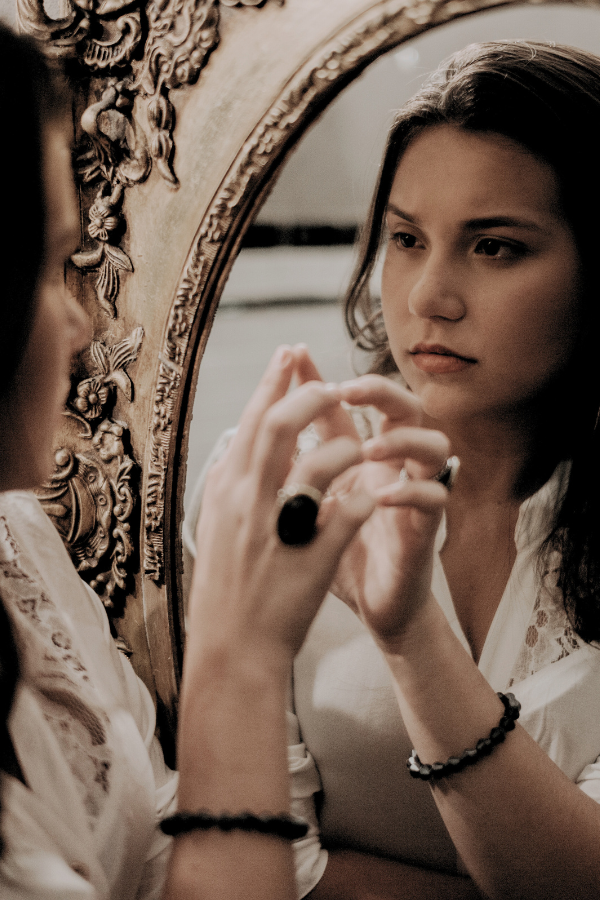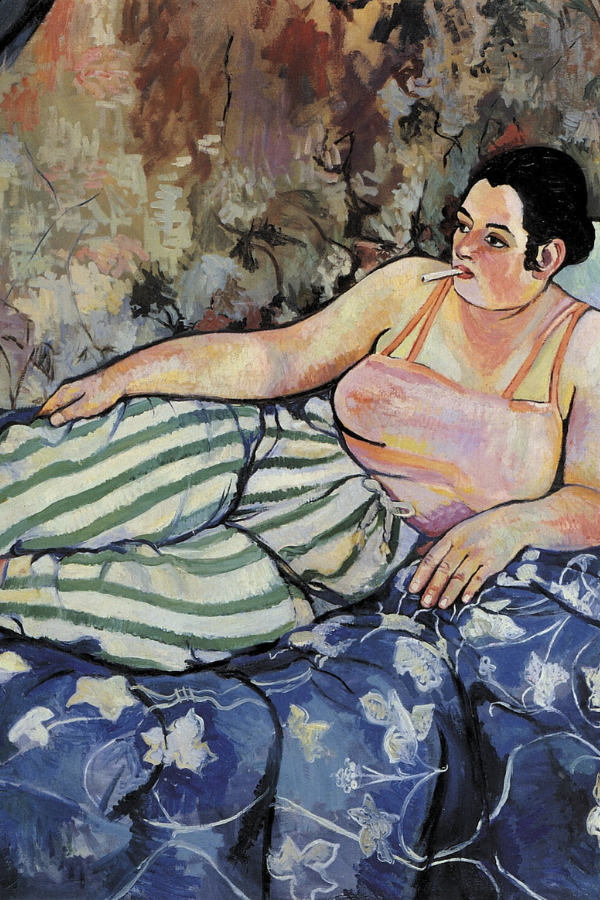

Suzanne Valadon and the Société Nationale des Beaux-Arts
Summary
Reflection Questions
Journal Prompt
Suzanne Valadon was a remarkable 19th-century artist, distinguished by her achievement as one of the first female artistsf to be admitted into the prestigious Société Nationale des Beaux-Arts. Born in 1865, Valadon broke through the rigid gender barriers of her time, paving the way for future generations of female artists. Her admission into this esteemed society in 1894 not only marked a personal triumph but also signified a pivotal moment in challenging the entrenched norms of the male-dominated art world. Valadon’s journey from an artist’s model to a successful artist in her own right reflects a profound shift in the perception and acceptance of female artists, making her a symbol of perseverance and talent in an era resistant to female participation in the arts. In this article, we celebrate the life and legacy of one of the greatest women artists of the last two hundred years, exploring how her groundbreaking achievements contributed to reshaping the landscape of the modern art world for women.
Early Life and Background
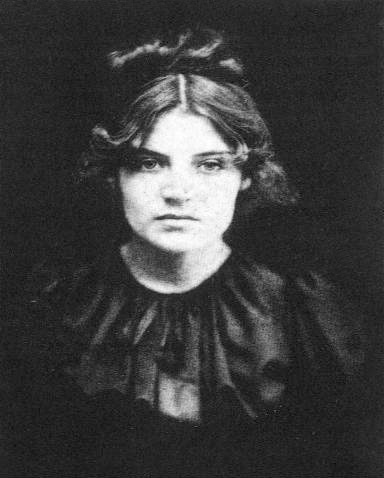

Suzanne Valadon, born Marie-Clémentine Valadon in 1865 in Bessines-sur-Gartempe, France, had a modest upbringing that belied her future significance in the art world. Raised primarily by her mother, an unmarried domestic worker who eventually pursued a career as a seamstress, Valadon’s early life was devoid of the luxuries of formal training as her family could not afford art lessons.
Despite this, she showed an early inclination towards art, often drawing on any materials she could find. Her family’s move to Paris when she was just a child opened the door to the bustling art scene of Montmartre, a neighborhood that would become central to her artistic career. The vibrant and bohemian atmosphere of Montmartre, coupled with her innate talent and determination, set the stage for Valadon’s initial forays into the world of art.
Entry to the Art World
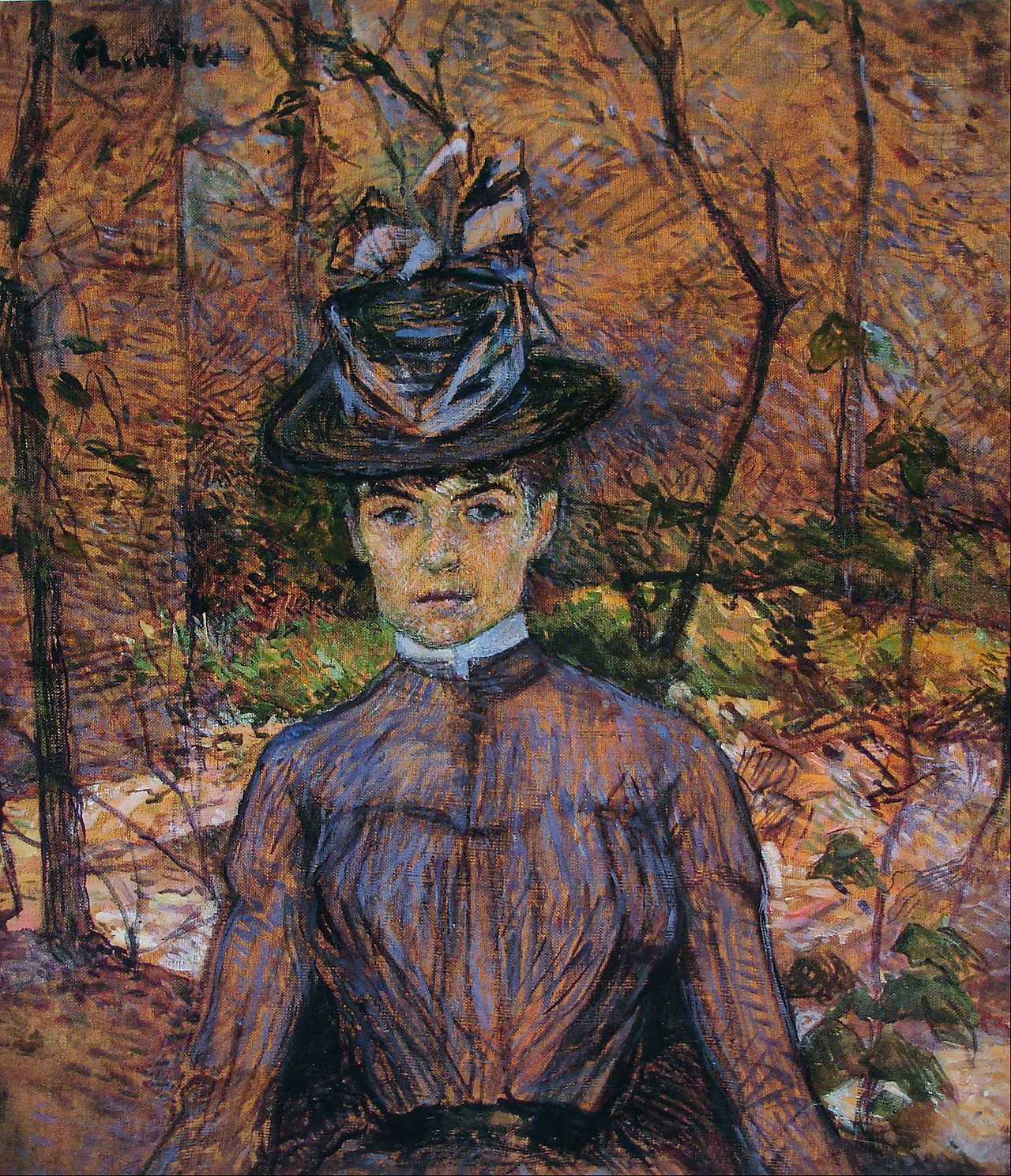

Valadon’s entry into the art world was unconventional. She began her career as a model. Suzanne Valadon modeled for renowned artists like Pierre-Auguste Renoir and Henri de Toulouse-Lautrec. This experience was pivotal, not only financially supporting her but also immersing her in artistic circles and exposing her to various painting styles and techniques.
Observing these artists at work provided Valadon with an informal yet invaluable education in art. Valadon began to paint with some encouragement from other successful French artists. It was during this time that she began to explore her artistic talents, sketching and painting in her spare time. The insights gained from modeling, including understanding of form, composition, and color, profoundly influenced her development as a painter.
This unique perspective, born out of her dual role as both muse and creator, would later inform her distinct approach to art, characterized by bold lines, strong compositions, and a deep understanding of the human form.
Her First Solo Exhibition
While Valadon frequented established art circles across Paris, it was not until her first solo show that she began to garner acclaim for her own career. Suzanne Valadon’s first solo exhibition took place at the Galerie Bernheim-Jeune in Paris in 1911.
Galerie Bernheim-Jeune, one of the leading art galleries in Paris at the time, was known for promoting avant-garde artists. This exhibition was a significant milestone in Valadon’s career, as it marked her emergence as an independent and respected artist in the Parisian art scene.
Today, her art is collected by major institutions like the Barnes Foundation, Musée National d’art Moderne, and the Metropolitan Museum of Art.
Artistic Career and Development
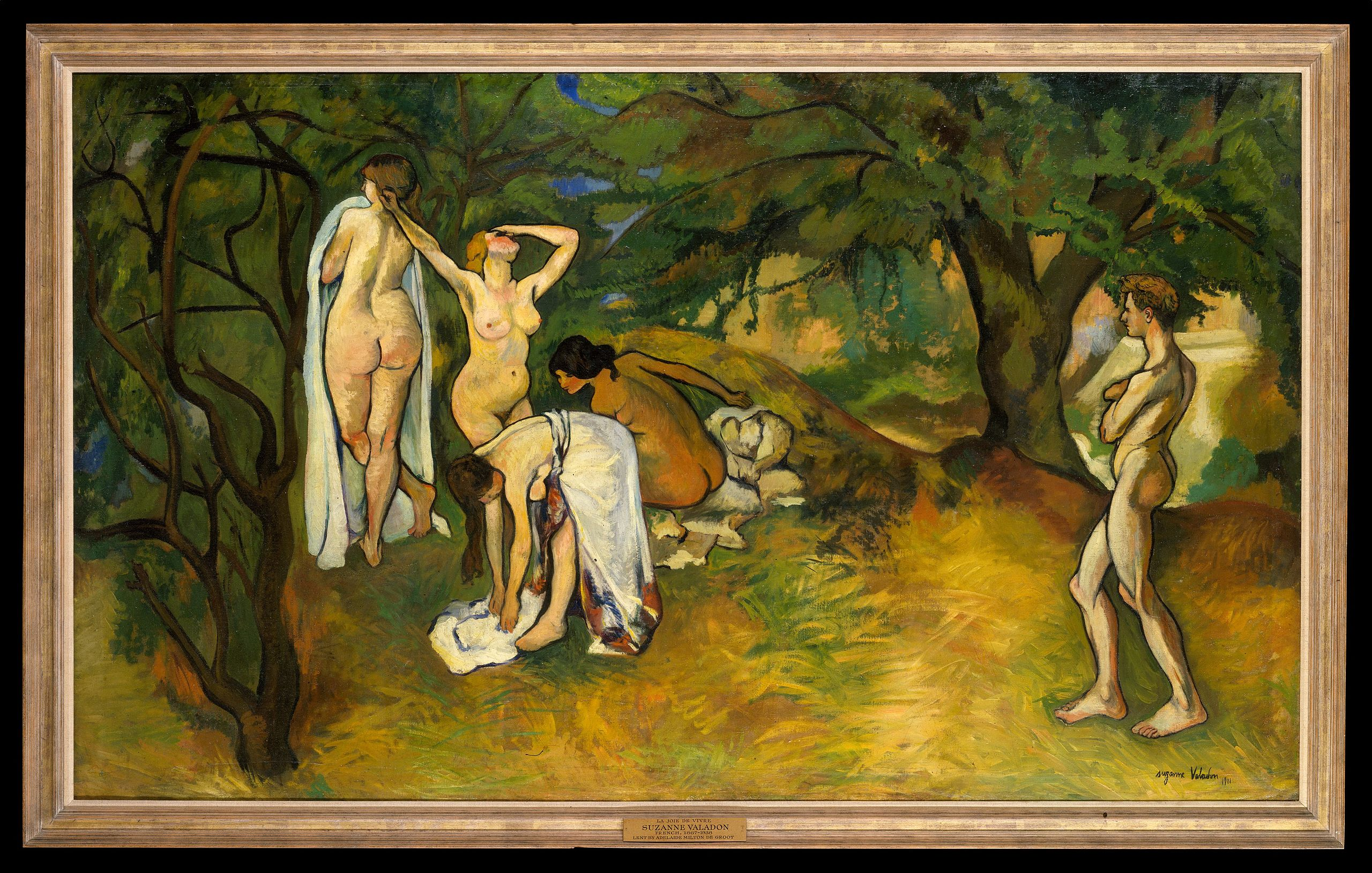

Suzanne Valadon’s transition from a model to an artist was a remarkable journey marked by self-determination and innate talent. Largely self-taught, the French painter developed her artistic skills through keen observation of the artists she modeled for, coupled with her own experimentation and practice. Her early works were characterized by bold line work and a naturalistic approach to form and color, a departure from the prevailing styles of her time.
These initial creations, primarily drawings and pastels, demonstrated her keen eye for detail and an intuitive understanding of human anatomy, likely influenced by her experience as a model. Her early subject matter often included portraits and landscapes, showcasing her versatility and eagerness to explore different facets of art.
Key Milestones in Her Artistic Career
Valadon’s career as a painter gained momentum in the late 1880s and early 1890s. A key milestone was her first exhibition in 1894, which marked her as one of the first female painters admitted to the Société Nationale des Beaux-Arts. Her works were well-received, and she quickly established herself as a respected artist in her own right.
Significant works from this period include “The Blue Room” (La Chambre Bleue). Valadon’s painting “The Blue Room” showcased her skill in depicting the female form with honesty and strength. Her participation in various exhibitions, both solo and in collaboration with other artists, solidified her reputation in the art community. These exhibitions were not just showcases of her talent but also affirmations of her breaking through the gender barriers of the time.
Valadon’s Artistic Style
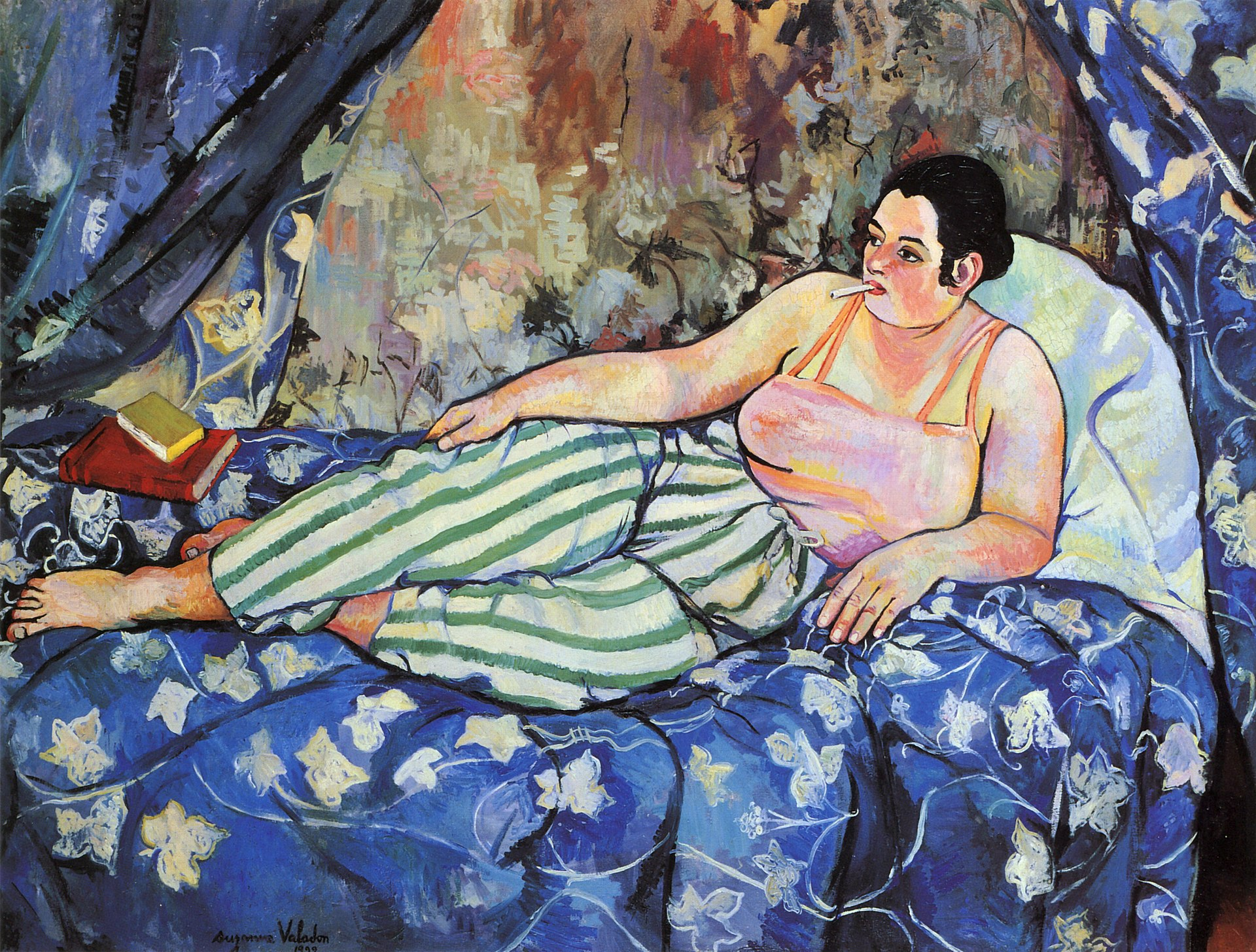

Valadon’s artistic style was distinctive, characterized by a bold use of color and strong, confident lines. She often explored themes of femininity, motherhood, and the female form, portraying her subjects with an unflinching realism that was both striking and provocative.
Unlike many of her contemporaries, Valadon’s diverse representations of female nudes were not idealized or overly romanticized. Instead, each female nude was robust, candid, and full of character, reflecting her own experiences and perspectives as a woman in a male-dominated society. Her nude self-portraits were pioneering for the time and challenged antiquated views on female sexuality. As pictured below, Valadon’s male nudes were equally intriguing.
Her works also frequently featured domestic scenes and landscapes, painted with a vibrancy and vitality that brought these everyday scenes to life. Valadon’s unique approach not only distinguished her work within the artistic community but also contributed to the broader narrative of women’s roles in art, both as subjects and as creators.
Admission to the Société Nationale des Beaux-Arts
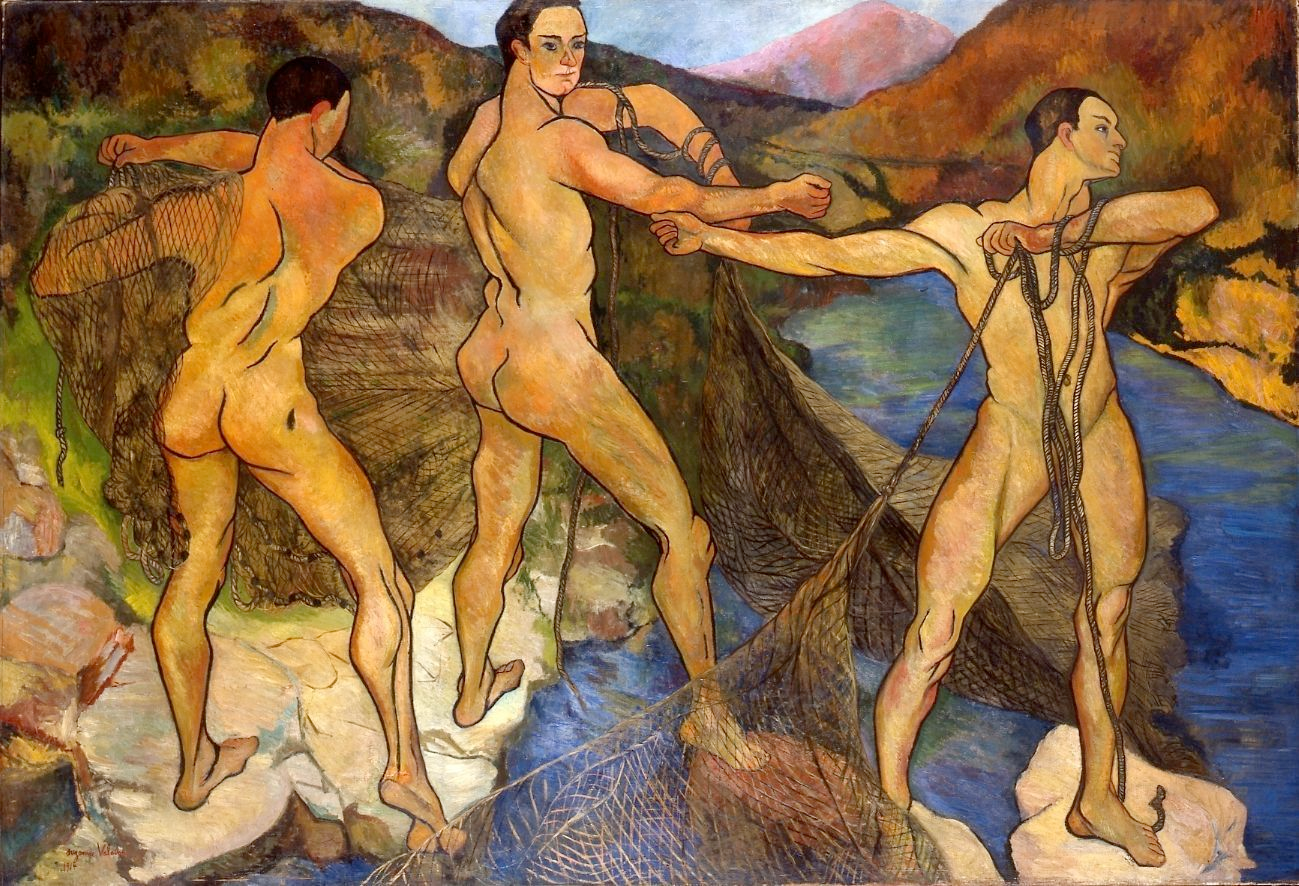

Suzanne Valadon’s admission to the Société Nationale des Beaux-Arts in 1894 was a culmination of her relentless pursuit of artistic recognition in a field dominated by men. This journey was fraught with challenges, given the societal norms and restrictions placed on women in the arts during the late 19th century.
Her entry into this prestigious institution was not only a personal victory but also a landmark moment in art history. It was her unique artistic voice, coupled with the support and encouragement from established artists like Edgar Degas, that paved her way into the Société.
Degas, in particular, was instrumental in recognizing her talent, often buying her work and recommending her to others. Valadon’s acceptance into the Société was a testament to her skill and determination, as she transcended the role of a model to become a celebrated, successful painter in her own right.
The Significance of Valadon’s Admission
The significance of Valadon’s admission into the Société Nationale des Beaux-Arts cannot be overstated, especially in the context of the male-dominated art world of her time. In an era when women were largely relegated to the role of muses or models, Valadon’s achievement shattered prevailing gender norms and opened doors for greater female participation in the arts.
Her acceptance into such a prestigious institution was a bold statement against the gender biases of the period and served as a beacon of possibility for other aspiring female artists. It challenged the notion that women could not pursue careers as professional artists and laid the groundwork for a gradual shift in attitudes towards women in the art community.
The Impact of Valadon’s Admission to the Société Nationale des Beaux-Arts
Valadon’s admission into the Société had a far-reaching impact on the perception and opportunities for female artists. Her success provided a tangible example of what women could achieve in the arts, inspiring a generation of female artists to pursue their artistic ambitions with newfound vigor.
It marked the beginning of a slow but steady change in how women were viewed in the art world, not just as passive subjects but as active creators and contributors. Her breakthrough opened up conversations about women’s roles in art and helped to pave the way for greater recognition and inclusion of female artists in galleries, exhibitions, and art institutions.
Valadon’s legacy in this regard is profound, as she became a symbol of defiance against the gender constraints of her time and a source of inspiration for women in the arts for generations to come.
Notable Works and Contributions
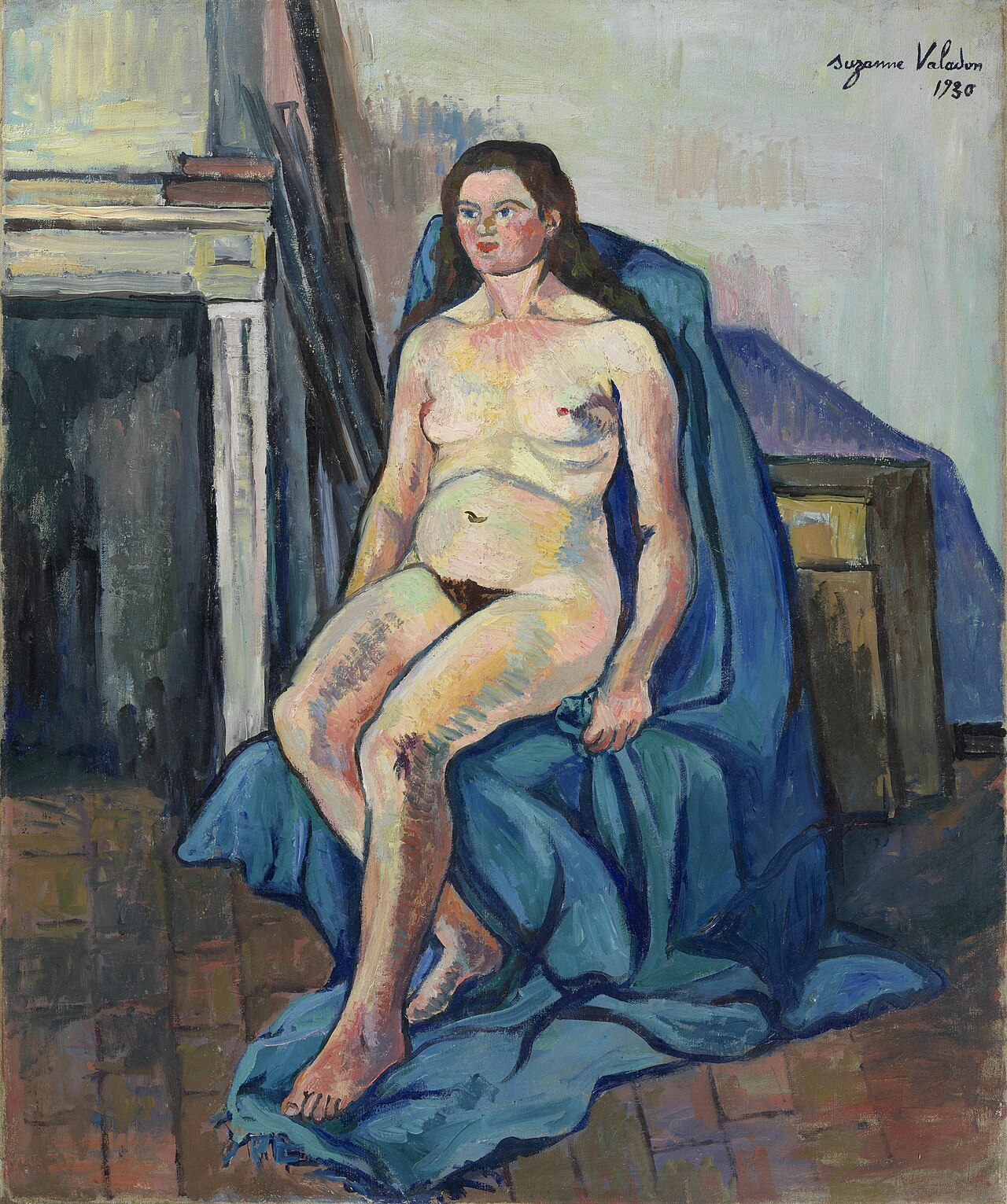

Suzanne Valadon’s oeuvre includes several significant works that have left an indelible mark on the art world. Among these, “The Blue Room” (La Chambre Bleue) stands out for its intimate portrayal of a woman in her private space, a subject rarely approached with such candor at the time.
Another notable oil painting, “Casting the Net” (Les Lanceurs de Filets), showcases her skill in capturing movement and everyday life. Valadon’s works are characterized by strong, confident lines and a vibrant use of color, which brought her subjects to life with a unique sense of realism and vitality.
Her paintings were not just visually compelling but also rich in narrative, often exploring themes of womanhood, domesticity, and the human experience. These works contributed significantly to the narrative of modern art, challenging traditional styles and perspectives.
How Her Work Challenged Societal Norms
Valadon’s work was revolutionary in its challenge to societal norms and expectations of female artists. In an era when women in art were often confined to the roles of muses or subjects, Valadon’s paintings presented a bold, alternative narrative. Her depictions of the female form were unapologetic and authentic, devoid of the romanticism or idealization that characterized the works of many of her male contemporaries.
By portraying women as complex, real individuals with their own stories and experiences, she broke away from the conventional portrayal of women as passive and ornamental. This approach not only reflected her personal experiences and views but also resonated with broader movements for women’s rights and emancipation during her time.
Valadon’s Influence on Other Women Artists
The influence of Suzanne Valadon on subsequent generations of artists, particularly women, is profound. As one of the first women to break into the male-dominated art world, she paved the way for future female artists to pursue their careers in the fine arts more freely.
Her success challenged the traditional barriers faced by women in art, inspiring them to express their perspectives and experiences through their work. Valadon’s legacy extends beyond her stylistic contributions; she is remembered as a trailblazer who expanded the possibilities for women in the art world. Her life and work continue to inspire and empower female artists today, serving as a reminder of the importance of diversity and representation in the arts.
Her journey from a model to a respected artist in her own right is a testament to her resilience and talent, and her story remains a source of motivation for artists striving to break through barriers and redefine the norms of the art world.
Later Life and Legacy
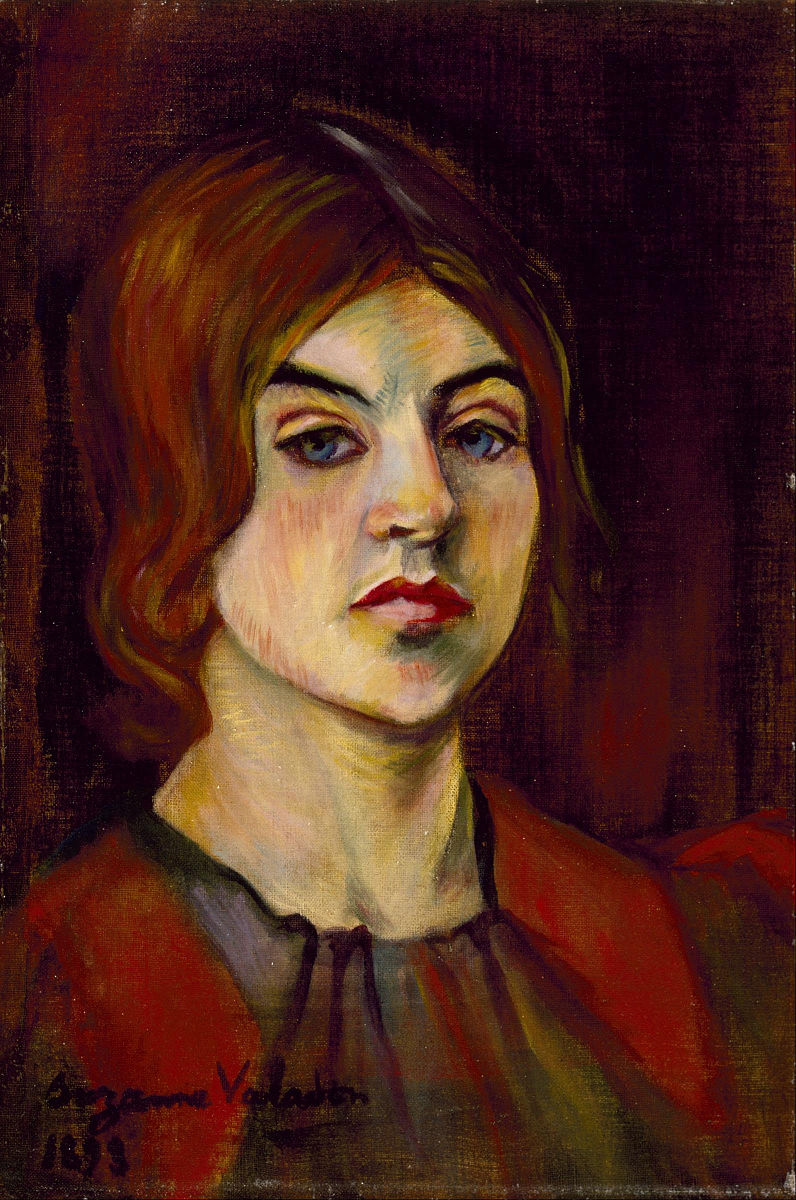

In the later years of her life, Suzanne Valadon continued to produce art that was both vibrant and evocative, maintaining her status as a significant figure in the art world. Her later works often reflected a maturity in style and subject matter, delving deeper into the complexities of human relationships and emotions.
During this period, she also experienced personal developments that influenced her art. Her relationship with her son, Maurice Utrillo, himself a notable painter, was both a source of inspiration and concern due to his struggles with mental health and alcoholism. Valadon’s resilience in facing these personal challenges was mirrored in the strength and depth of her later paintings.
Despite health issues in her later years, she remained dedicated to her art, continuing to paint and exhibit until her death in 1938.
Her Role as a Trailblazer for Women Artists
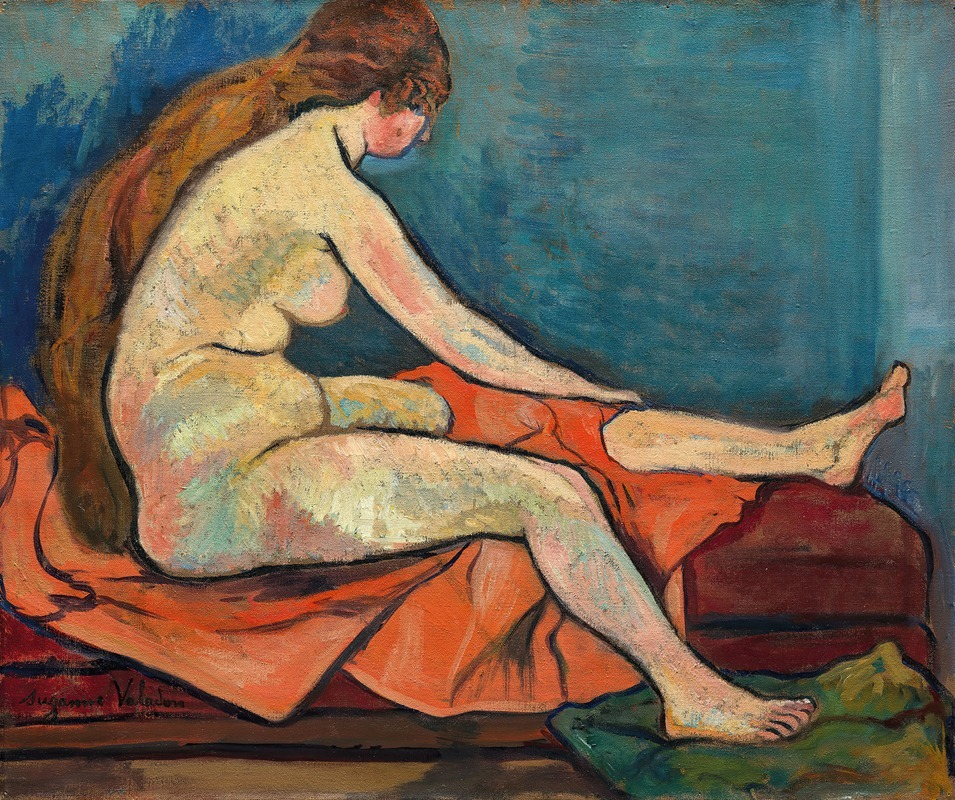

Suzanne Valadon’s legacy in the art world is marked by her role as a trailblazer for female artists. She was one of few artists models who successfully transitioned to a respected career in the arts. Her groundbreaking achievements, especially her admission to the Société Nationale des Beaux-Arts, set a precedent for women in the arts, challenging the gender biases and restrictions of the time.
Valadon’s success opened doors for future generations of female artists, paving the way for greater recognition and equality in the art world. Her contributions extended beyond her stylistic innovations; she redefined what it meant to be a woman artist, breaking away from traditional roles and expectations. Her legacy is not only found in her paintings but also in the barriers she broke down, inspiring a more inclusive and diverse artistic landscape.
Suzanne Valadon’s Place in Art History
The enduring impact of Suzanne Valadon’s work and her place in art history are significant. Her paintings continue to be celebrated for their boldness, authenticity, and emotional depth. Valadon’s unique perspective, as both a former model and a female artist, offered a fresh and nuanced view of the world around her.
Her approach to depicting the female form and her exploration of themes like womanhood and domestic life provided new insights and narratives in art. Today, Valadon is remembered not just as a talented painter but as a pioneer who challenged the conventions of her time, contributing to the evolution of modern art.
Her story and achievements continue to resonate, serving as a source of inspiration and a reminder of the importance of challenging norms and embracing diverse voices in the arts.
Final Thoughts on Valadon’s Incredible Career and Enduring Influence
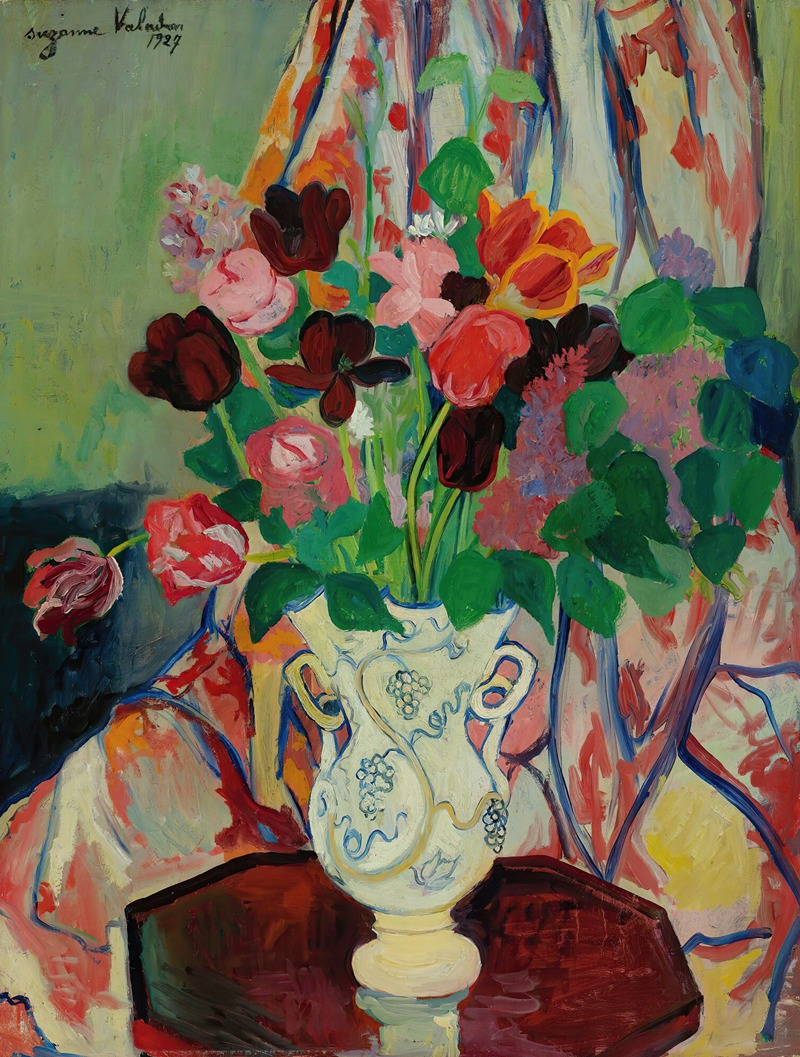

Suzanne Valadon’s life and achievements stand as a testament to her extraordinary talent and determination in the face of the gender biases of her era. From her humble beginnings to becoming one of the first female painters admitted to the Société Nationale des Beaux-Arts, Valadon broke through the restrictive boundaries imposed on women in the art world.
Her bold and authentic portrayals of the female form and everyday life challenged societal norms and reshaped the narrative of women in art. Valadon’s enduring influence extends beyond her significant contributions to modern art; she paved the way for future generations of female artists, inspiring them to pursue their creative visions with tenacity and courage.
Recognizing trailblazers like Valadon is crucial, not only to honor their legacy but also to underscore the importance of diversity and representation in art history. Her story is a powerful reminder of the resilience and creativity that continue to drive the evolution of artistic expression.







